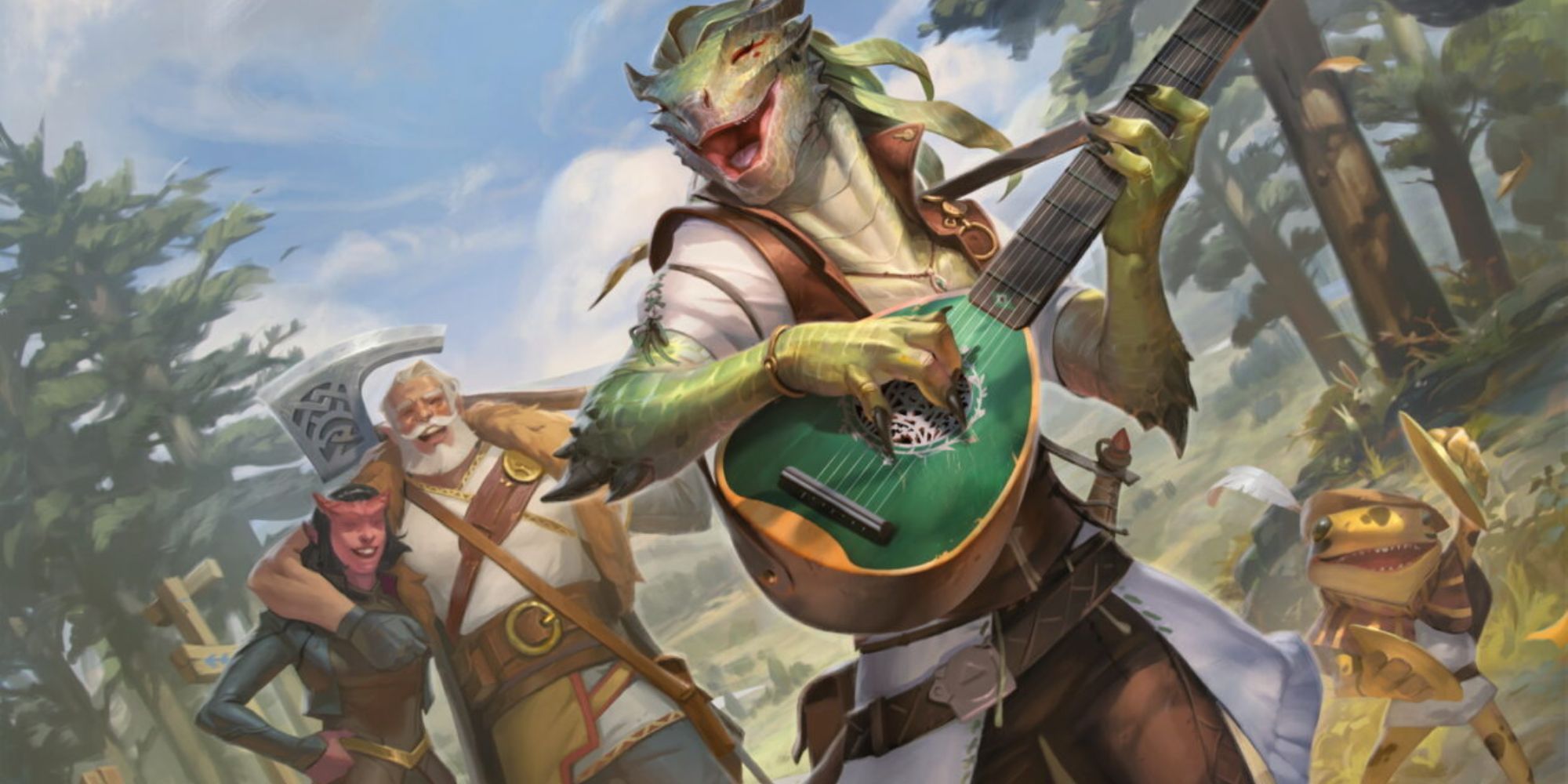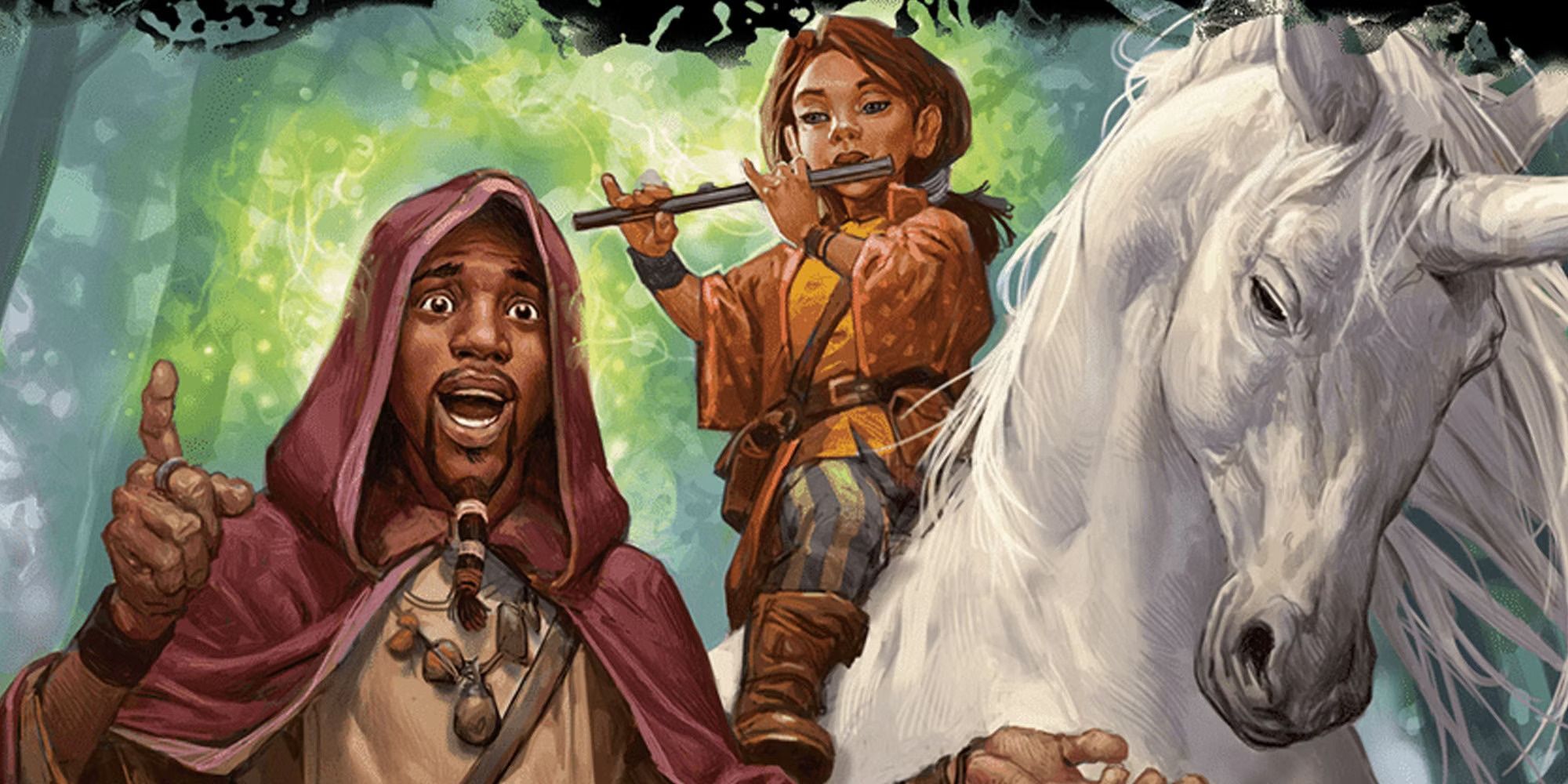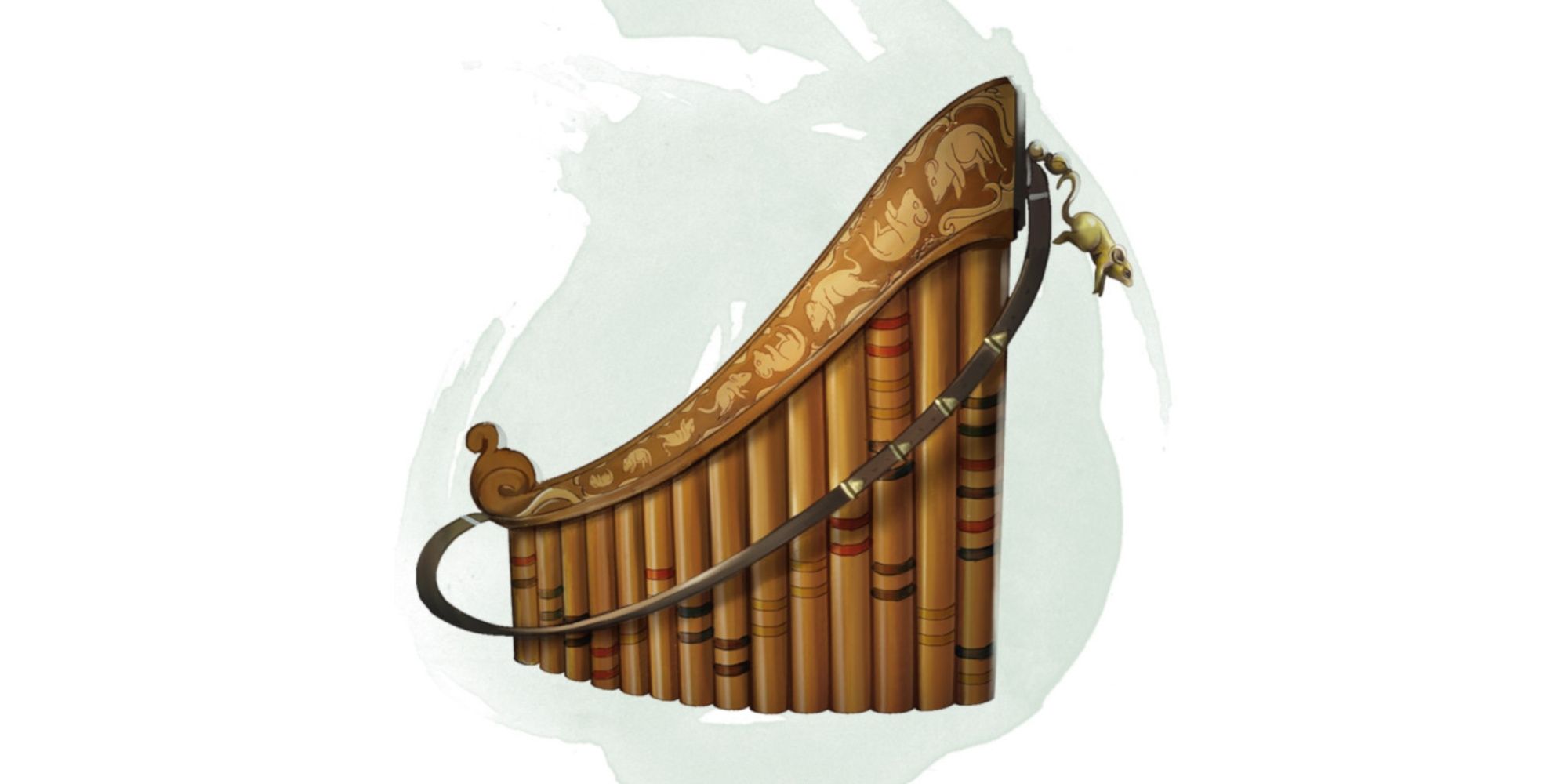Bards are an incredibly versatile class in Dungeons and Dragons, and it's only fair that their instruments are versatile and easy to use in battle too. The Player's Handbook recommends a handful of instruments for bards to pick from, but that doesn't necessarily mean that all of them are good or even well suited to the battle-heavy, traveling lifestyle.
Different instruments fit different bards, but you do need to consider how those instruments affect fighting style. Of course, it's always important to remember that if you work with your Dungeon Master, you can add a magical flavoring to your instruments to make them viable for the adventuring life.
10 Dulcimer
Although the Dulcimer is undeniably a beautiful instrument to listen to, with a lot of versatility in what it can play, it just isn't practical for battle. The Dulcimer is the kind of instrument when you need to set up its stand and sit to play, which isn't really a viable tactic for battle unless someone, or a few people, are going to be viciously defending the bard or you have it enchanted so it's easier to play.
The Dulcimer is a large instrument and isn't easily packed around for a fight, though it creates an epic scene. Just imagine conjuring up this massive, intricate spell with a dulcimer in the midst of battle, in one of the coolest areas of the entire Dungeons & Dragons universe, while the rest of the party defends you.
9 Viol
The Viol is another instrument that sounds amazing and can provide drastically different atmospheres depending on how it's played. However, it would be incredibly unwieldy in battle.
The Viol is relatively large and is generally played while sitting down, which is a very bad battle tactic to take.
If you wanted to play this instrument the traditional way, then you would be willingly putting yourself at a disadvantage as a bard. Realistically this instrument would be better for a roleplay-heavy campaign that experiences limited battle.
8 Horn
The Horn, in the way that Wizards of the Coast probably meant it to be, probably isn't something like a French Horn. Instead, it's probably the more traditional hollowed-out horn that was generally used as a signal.
Although it makes a noise, the horn doesn't really release enough nuanced notes to be a genuine musical instrument. Instead, it releases one loud and continuous note, so there's no denying that anybody would be able to hear it, but at least it's portable are fairly self-intuitive to use.
7 Bagpipes
The Bagpipes are certainly an impressive instrument with a strong presence, however, they are incredibly difficult to learn and play. They can be a bit big and intensive to play, which may make it easier for your character to, realistically, lose track of what's going on around them if they get a bit too into their playing.
Mechanically, nothing will actually happen, given that you probably aren't playing the bagpipes in real life. However, they are loud, so even in the midst of battle, your party is probably going to hear you play.
6 Drum
Thankfully, the Drum is one of the easier instruments to carry around, whether you're carrying it on a strap or marching band style. However, the drum doesn't fit easily with every style of bard and may require you to experiment with a handful of different aesthetics or even colleges to figure out what fits best.
Depending on the type of drum, you can also get different styles and create different atmospheres, so it's worth playing around with for a minute. Maybe you can even find a magical drum with some unique effects.
5 Shawm
The Shawm is basically the ancestor of the modern oboe and is great for some more upbeat songs, but it also lends itself well to the slow and ominous. It's on the bigger side, but it's not so large and hard to handle that you can't pick it up and run when the time comes.
However, given that you need to have amazing breath control to play it, your bard is either going to have amazing lungs or run out of breath very quickly if they have to stop mid-play to run. If you run into any Treants, this is a great way to get on their good side since Treants love the sound of a Shawm.
4 Lyre
The Lyre lends itself incredibly well to somber and melancholic songs as well as much more whimsical and fantastical songs, which gives it much more nuance than other instruments from the Player's Handbook.
The Lyre can vary in size, which means that it can be incredibly easy to carry (though the trade-off is you lose a lot of strings), or it can be significantly bigger with more strings (but much harder to run around with). This could be a great instrument for a bard who only has eyes for their lost love, which would break traditional bard stereotypes.
3 Lute
The Lute is your classic bard instrument, and you'll probably see most bards wielding one, but it's for good reason! Lutes are versatile and fun to play, offering the potential to create any atmosphere that a bard could hope for at any given moment.
Of course, you probably should wield it like a club because you're probably going to break it if you do. Although the Lute is definitely one of the larger instruments that a bard can wield, it's still reasonably portable and easy to use in battle.
2 Flute
The Flute is definitely one of the more whimsical instruments you can pick from, easily creating a light and fantastical atmosphere to enjoy. It's also one of the most portal instruments that you could get your hands on, and as such, it's easy to carry around with other instruments.
If you're in a traveling troupe of bards, then this is a good option to take because it will add some lightness to the group's music, and you can always pair it with other musical instruments if you want to. If you want to play the Flute low and slow, however, it will take some serious breath control from your bard.
1 Pan Flute
The Pan Flute is probably the best instrument that you can take as a bard because it's incredibly portable and is very easy to work a strap into its build. Plus, the Pan Flute offers a more varied sound than the flute does and can vary drastically in size depending on how many tubes are attached, which gives it a decent amount of versatility.
The sound is slightly richer and warm than the flute, and it will add a good depth to any combination of instruments.

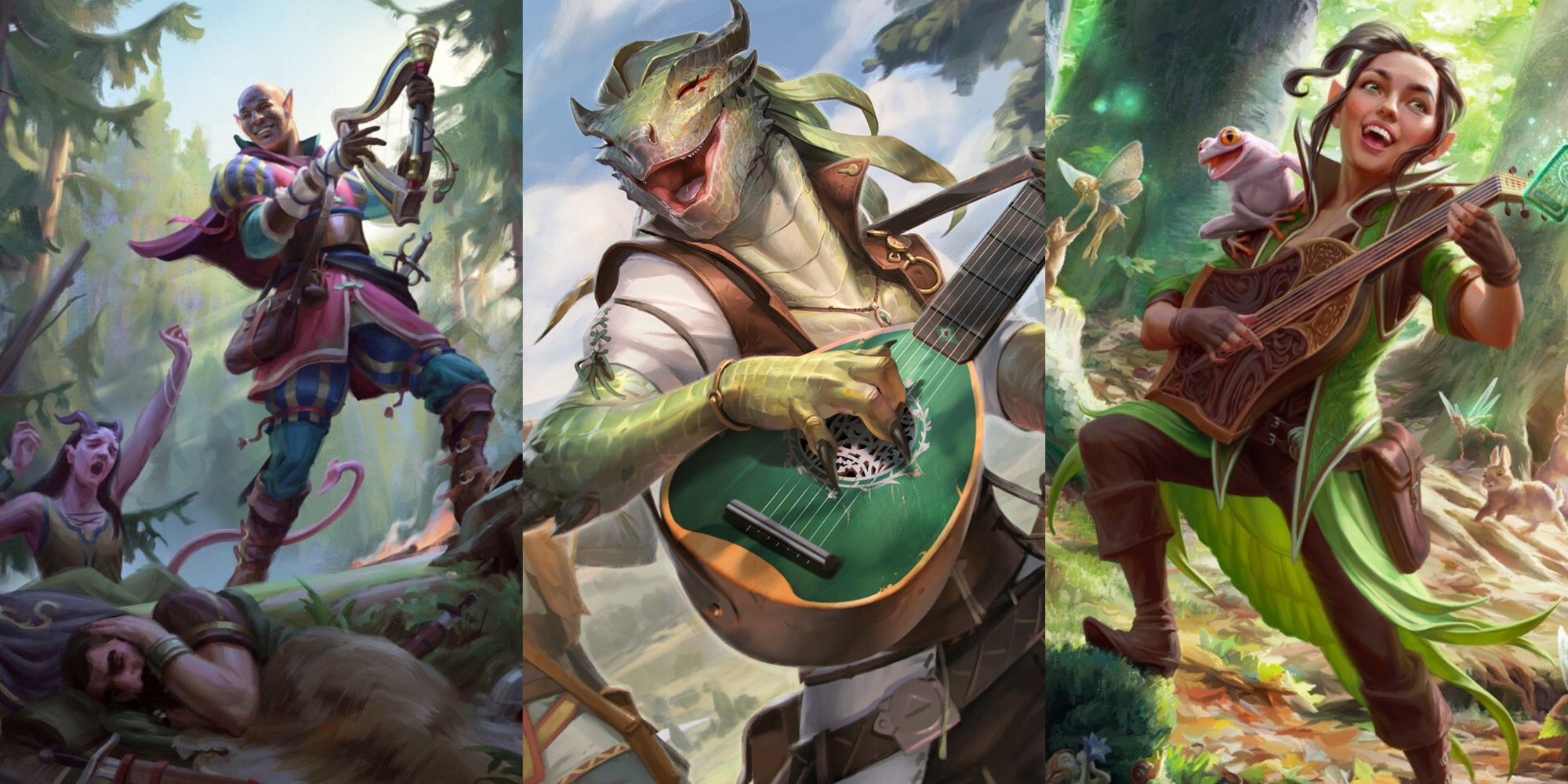
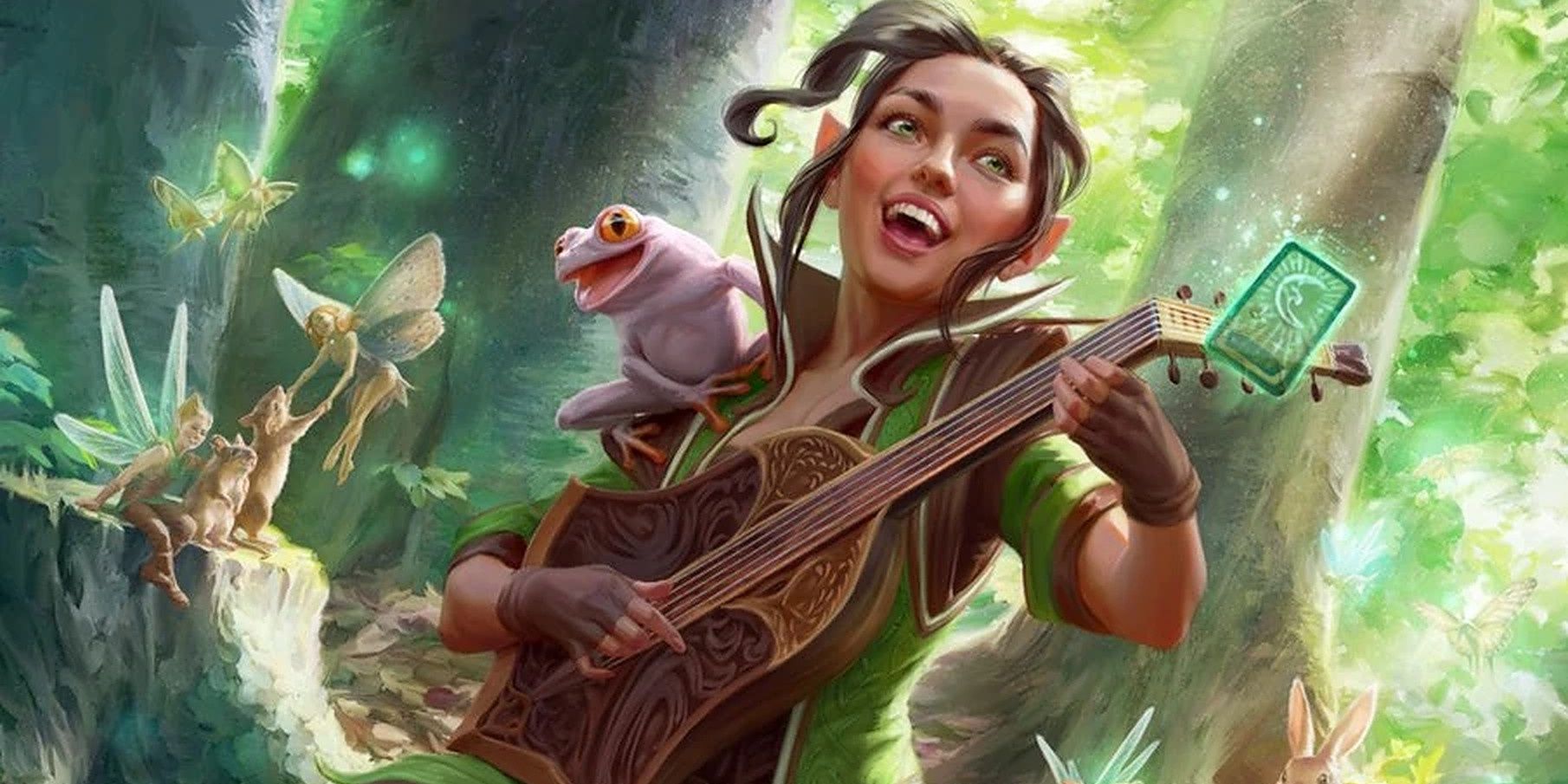
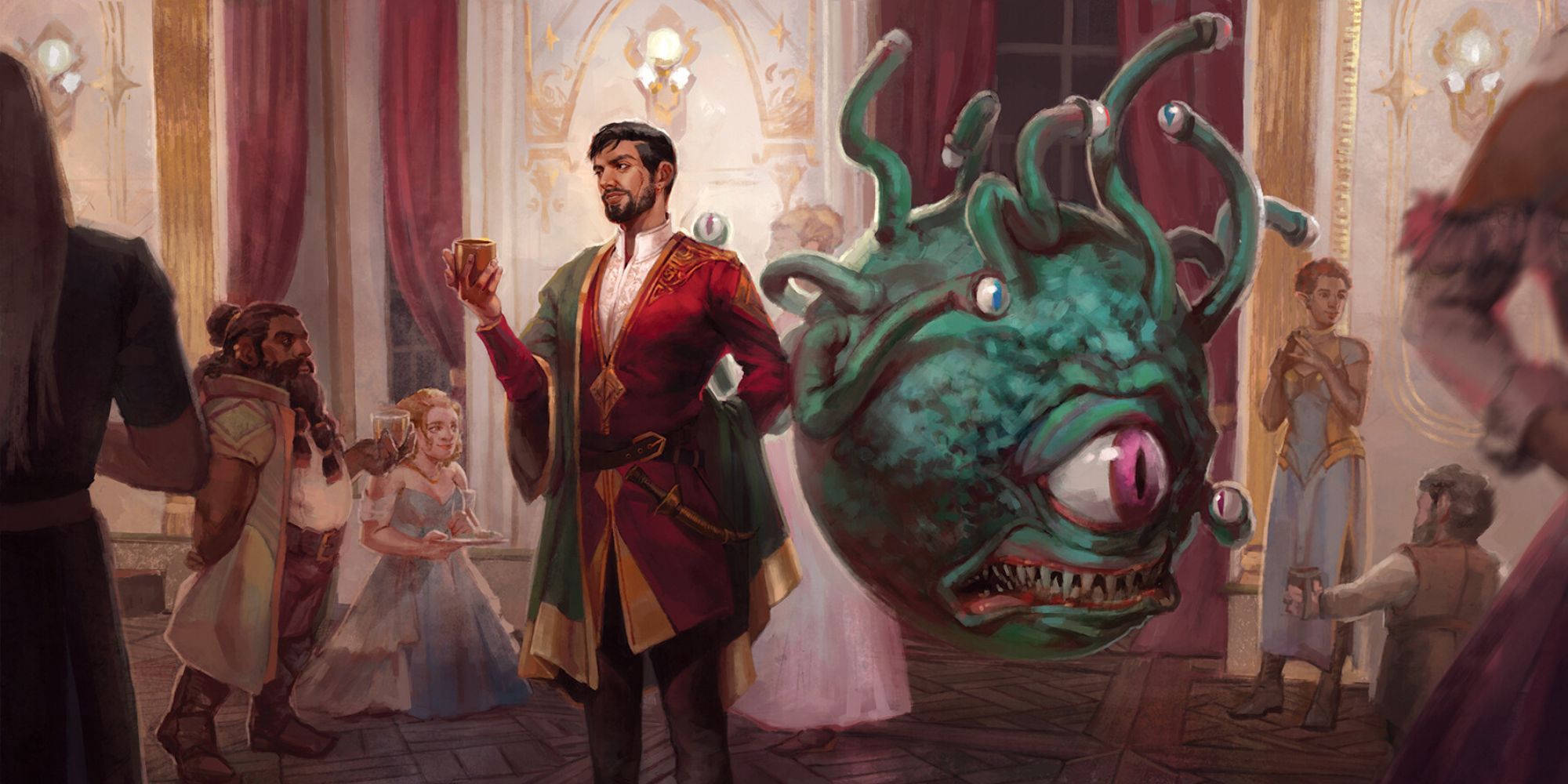
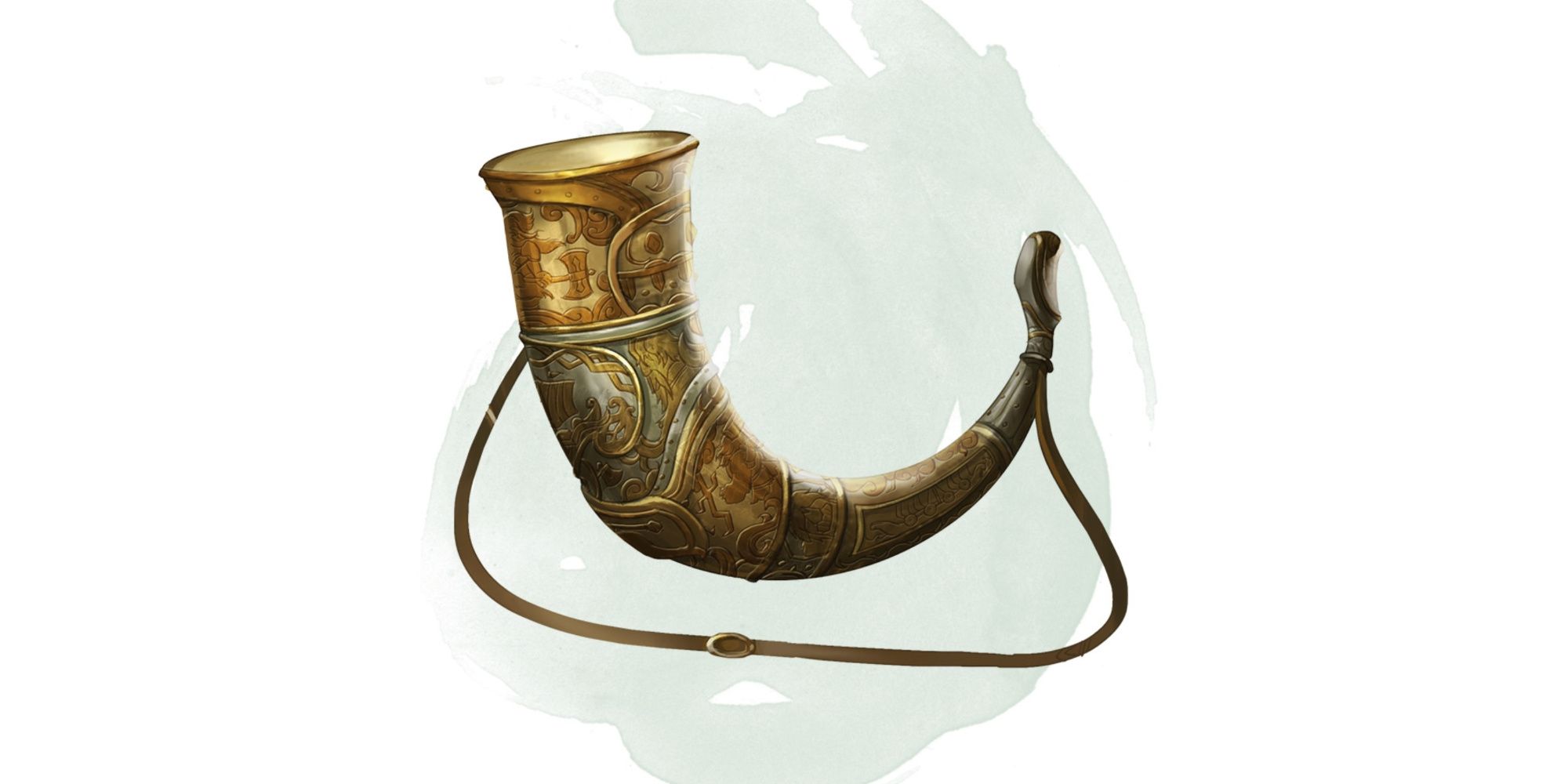
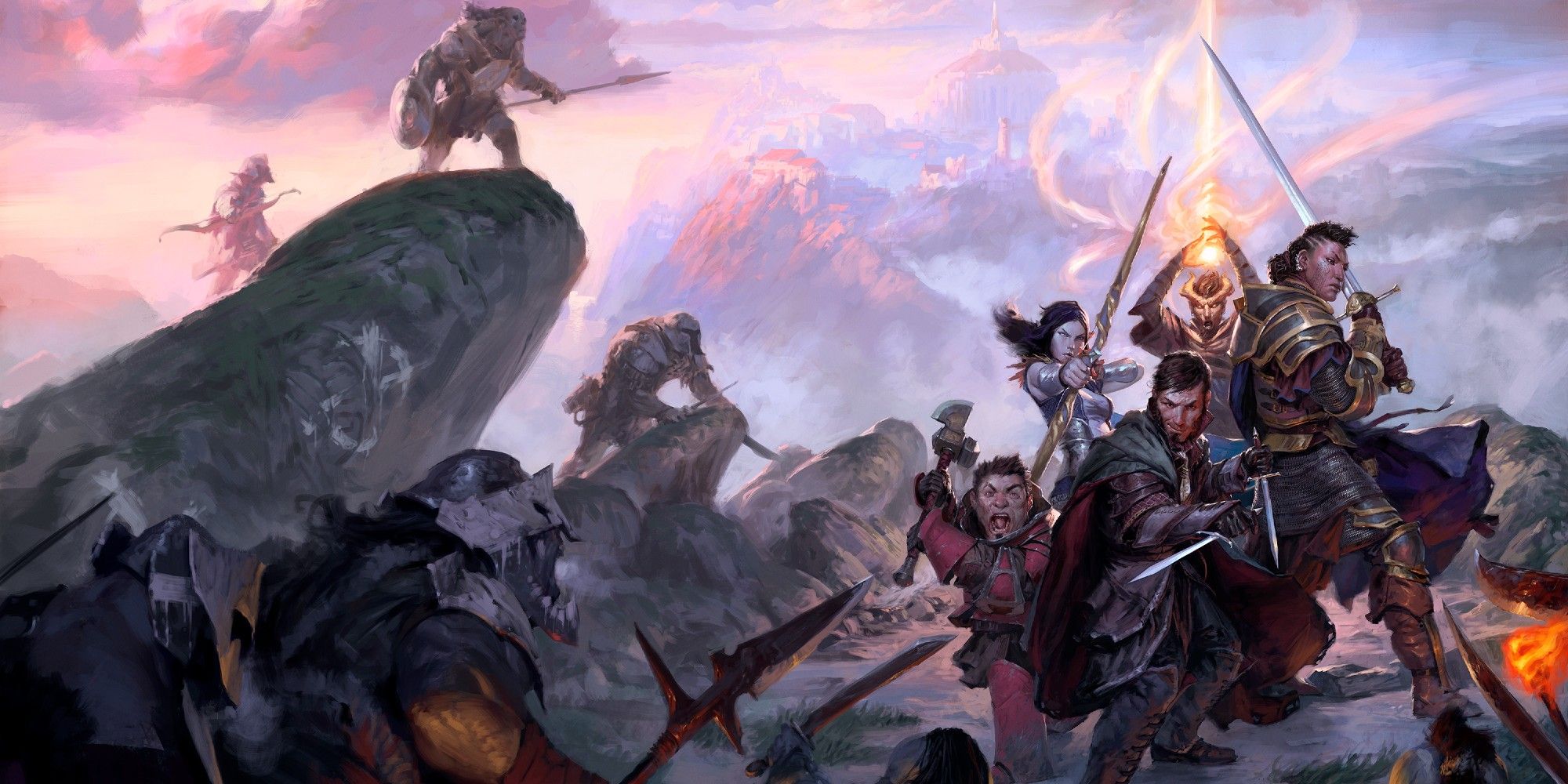
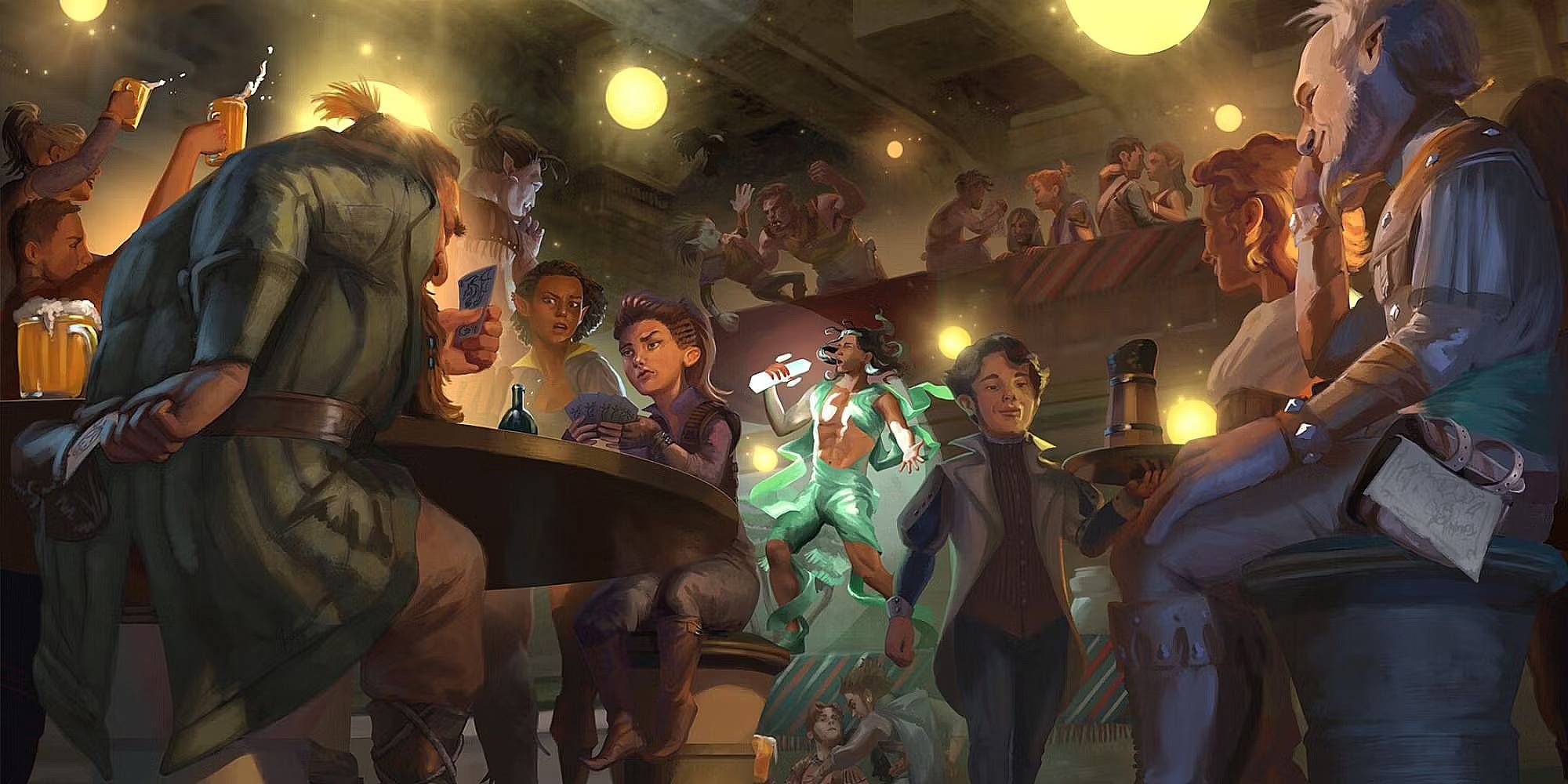
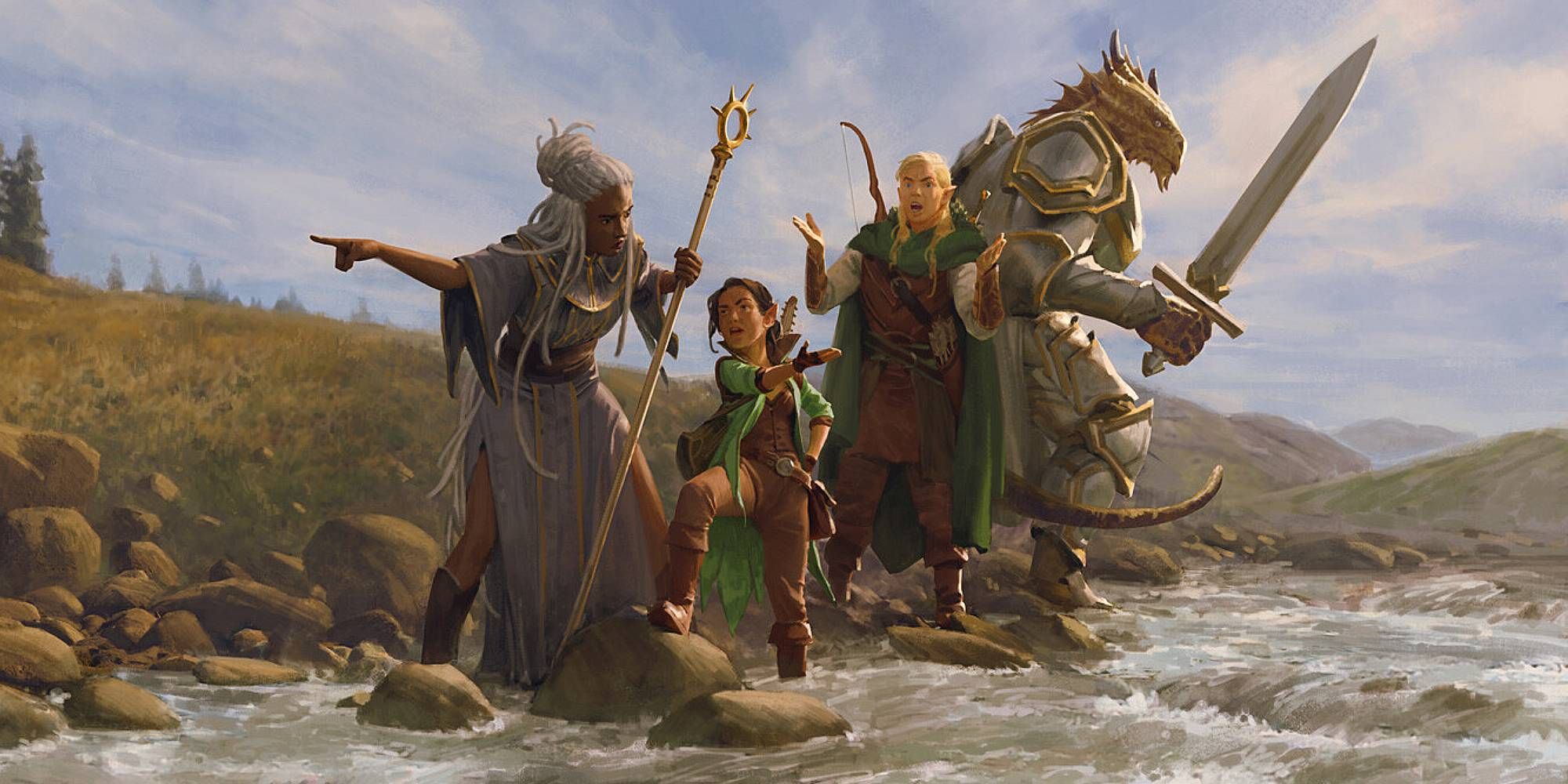
.jpg)
